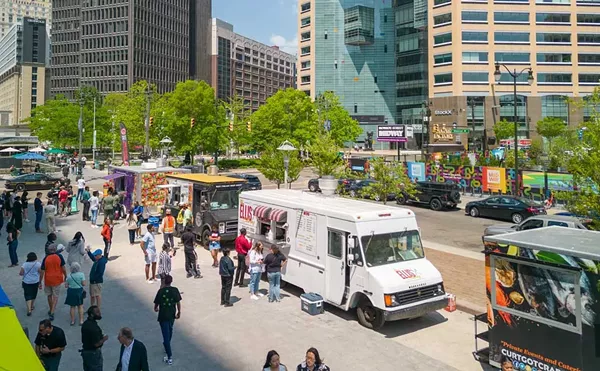A million years ago, back in 2005, Slows Bar-B-Q opened. Since then, we've seen dozens of barbecue contenders enter the dining scene. Of course, not all of them have been equal. The temptation to present a product in a hot market is such that not all of them are going to be authentic.
Then again, is there anything more demanding than the palate of an experienced barbecue maven? We know one, a close friend who's traveled the South and knows his stuff. He tells us that real barbecue places are few and far between. Real barbecue, cooked over fire and flavored with wood, is actually very difficult and demanding to do, so shortcuts are only natural.
The "pit" isn't a hole in the ground. More often, it's a smoker, a large grill that circulates smoke through meat at relatively low temperatures for a long time. In other places, especially the South, it can often be a brick structure fueled by an actual wood fire. This is often impractical in these parts due to restrictions on open fires in populated areas, but some barbecue places use fire and brick structures as their "pit." Though our buddy might cluck with displeasure at a gas smoker, what are you gonna do in metro Detroit? It's an effective and affordable solution to the age-old question of how to get that smoke onto the meat.
A lot of barbecue mavens look for a pink "smoke ring" just inside a cut of meat. But our buddy tells us that there are all sorts of work-arounds for that ring, and that legitimate barbecue competitions can't just barbecue based on that anymore.
In a fast-paced dining environment, should we complain if the meat is reheated? A busy barbecuer, working a large smoker for a huge crowd, will serve the meat fresh out of the smoker, but the process isn't always well-suited to sit-down dining. We figure a little reheating is OK, if not by the book.
We've even heard of barbecue guys who get so busy, they let the smoker do the smoke impregnation, and then finish the meat on a gas grill. He says he gets good results, but do his diners ever detect the heresy? He says no.
Liquid smoke is another culprit. It's not a whole lot of work to make sure the wood is always replenished for smoky flavor. If you're running a huge facility and smoking jerky, wood smoke probably makes sense. But for a craft product like barbecue, is it worth it to not even use a mix of woods for your smoky flavor?
People rave about meat that "falls off the bone," but this is almost always evidence of a process other than low-and-slow cooking at some point. Even if most of the meat slides off, there should still be at least a little to gnaw off the bone. If the meat does slide off, and you notice it doesn't have the firm consistency, and is a little on the gelatinous side, somebody almost certainly threw the ribs into boiling water at some point.
Unless you're visiting an old-line Detroit barbecue to get a slab of "to-go" ribs with the specified dressing already applied, your ribs should arrive dry, with sauces to choose from. Many an inferior barbecue joint will sauce your ribs to hide any defects.
The final rule to appreciating barbecue is: There are no rules. No definitive rules, that is. Whatever you like is whatever you want. In truth, fussing over one set of "rules" for barbecue often fails to take into account the many regional variations of this American food.






